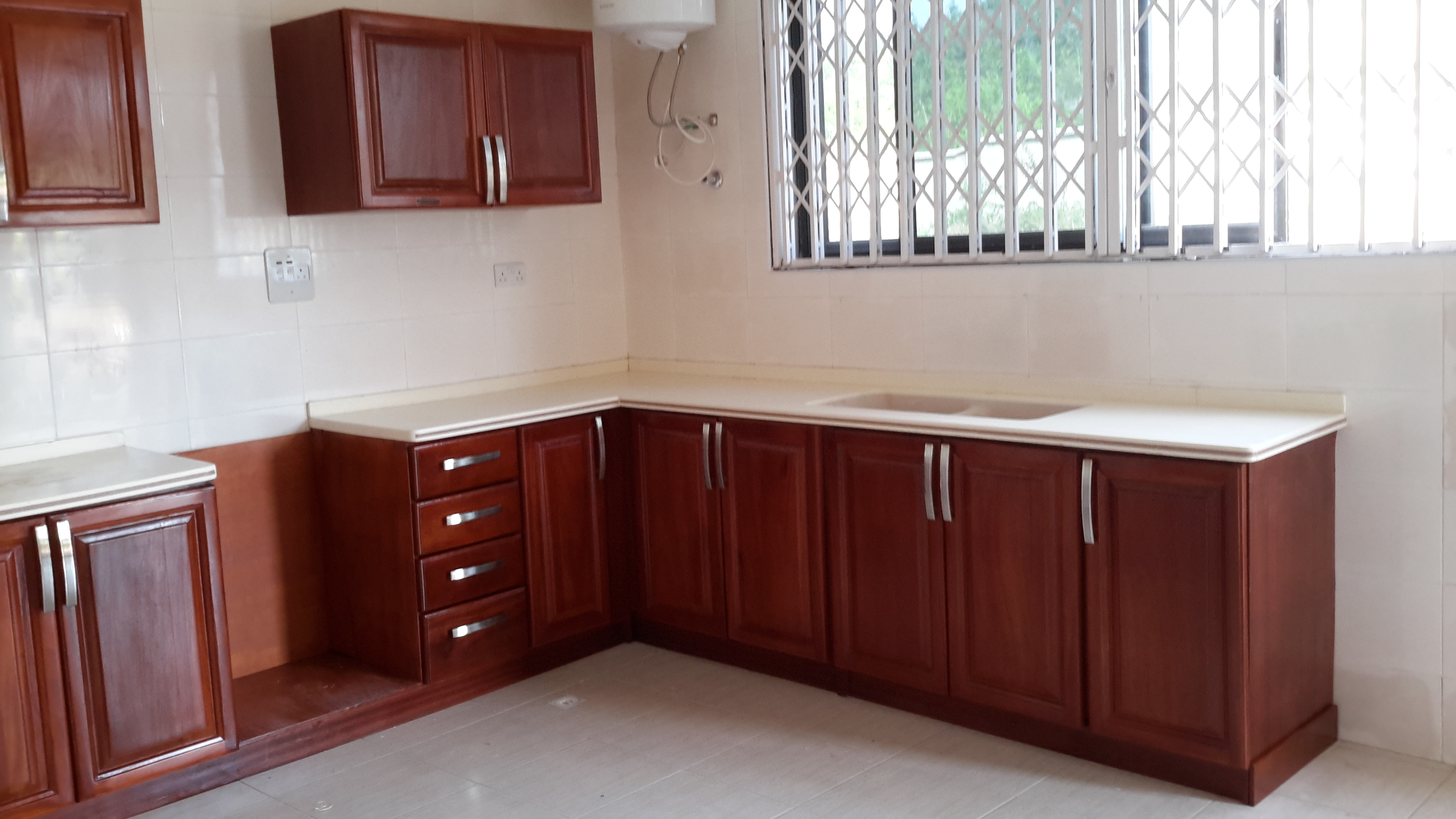Traditional Ghanaian Kitchen Cabinet Styles

Traditional Ghanaian kitchen cabinets reflect a rich history of craftsmanship and resourcefulness, utilizing readily available materials and time-honored techniques. These designs are often deeply intertwined with local artistry and cultural symbolism, resulting in unique and visually appealing pieces. The practicality and durability of these cabinets, while often impressive, are subject to comparison with modern designs.
Materials and Joinery Techniques, Ghanaian kitchen cabinet designs
The most common material for traditional Ghanaian kitchen cabinets is wood, sourced from local trees such as mahogany, teak, and wenge. These hardwoods are prized for their durability, strength, and rich aesthetic qualities. Traditional joinery techniques, passed down through generations, often rely on intricate mortise and tenon joints, dovetail joints, and other methods that minimize the use of nails or screws, resulting in strong and lasting constructions. The choice of wood and the specific joinery method employed can vary based on regional traditions and the skill of the artisan. For example, some regions might favor a particular type of wood known for its resistance to termites, while others might utilize more intricate joinery techniques to create visually stunning pieces.
Modern Ghanaian Kitchen Cabinet Trends: Ghanaian Kitchen Cabinet Designs

Ghanaian kitchen cabinet design is experiencing a dynamic evolution, blending traditional craftsmanship with contemporary aesthetics and functionality. This shift reflects a growing appreciation for modern materials and design principles, while simultaneously retaining the cultural essence of Ghanaian design. The integration of international styles is also evident, resulting in unique and innovative kitchen spaces.
Modern materials are significantly impacting Ghanaian kitchen cabinet design. The use of sleek metallic finishes, such as stainless steel and brushed aluminum, adds a touch of sophistication and durability. Glass is incorporated in cabinet doors and shelving, creating a sense of openness and visual appeal, particularly in smaller kitchens where maximizing light is crucial. Laminates, offering a wide range of colors and patterns, are popular for their affordability and ease of maintenance. These modern materials are often combined with traditional Ghanaian hardwoods, creating a visually striking contrast and highlighting the inherent beauty of both.
Influence of International Design Styles
International design styles, particularly minimalist and Scandinavian designs, are influencing Ghanaian kitchen cabinets. Minimalist designs, characterized by clean lines, simple forms, and a focus on functionality, are adapted to suit local preferences by incorporating warm-toned woods and vibrant colors often found in traditional Ghanaian décor. Scandinavian styles, known for their light and airy aesthetics, are adapted through the use of lighter-colored woods and the incorporation of natural light. These adaptations ensure that the international influences complement, rather than overshadow, the inherent cultural aspects of Ghanaian design. For example, a minimalist kitchen might feature sleek white cabinets paired with a richly colored, locally sourced hardwood countertop.
Modern Ghanaian Kitchen Cabinet Layout for a Small Apartment
Space optimization is paramount in designing a kitchen for a small apartment. The following layout prioritizes maximizing storage and workflow efficiency within a limited footprint.
- L-shaped configuration: An L-shaped layout efficiently utilizes corner space, maximizing storage and counter space. This configuration is ideal for smaller kitchens as it allows for a natural workflow triangle between the sink, stove, and refrigerator.
- Tall, narrow cabinets: Utilizing vertical space with tall, narrow cabinets maximizes storage capacity without compromising floor space. These cabinets can be used to store less frequently used items, freeing up space in lower cabinets for everyday essentials.
- Pull-out drawers and shelves: Pull-out drawers and shelves in base cabinets allow for easy access to items stored in the back, eliminating the need to reach deep into cabinets. This feature is particularly useful in small kitchens where space is limited.
- Open shelving: Incorporating open shelving strategically can add visual interest and reduce the feeling of claustrophobia often associated with small spaces. Open shelving can be used to display decorative items or frequently used dishes and utensils.
- Multi-functional furniture: Consider using multi-functional furniture, such as a kitchen island that doubles as a dining table or a storage bench with built-in drawers. This helps maximize space utilization while providing additional seating and storage.
